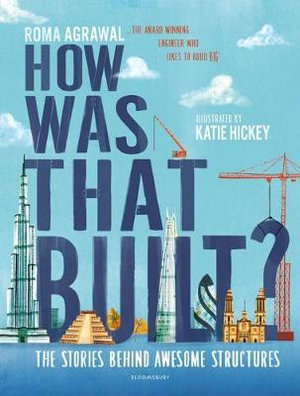How was that built? by Roma Agrawal. Illus. by Katie Hickey

How Was That Built? written engineer Roma Agrawal and illustrated by Katie Hickey is a beautifully presented non-fiction book which focuses on stories behind awesome structures from all over the world. The Contents page contains fourteen “How to build…” chapters which includes ideas of how to build long, clean, a dome, across, stable, in outer space, in the sea, as well as others. Each chapter explains the technology behind a famous construction related to each individual topic with an explanation of how it was built, other interesting fact-related material and ideas for trying things at home.
In the How to Build Tall chapter The Shard in London is described in great depth. The author, who worked on the design of this building, includes information about what makes a building stand and introduces the reader to several technical terms. The How to Build Stable chapter provides a comprehensive look at the Te Matau A Pohe, a bridge in earthquake prone New Zealand. To resist earthquakes the engineers left a small gap between the moving and fixed parts so during an earthquake, they are unable to damage each other. The final chapter looks at Building into the Future and is followed by an extensive glossary and finally a snapshot of some very talented engineers.
The detailed and softly coloured illustrations by Katie Hickey include large scale cross sections and drawings of each structure as well as examples of the engineering techniques shown to the reader. The drawings are clearly labelled when necessary and provide an important visual display to accompany the text.
This book will be a valuable resource for STEM when looking at man-made structures. There are many ideas for budding engineers or builders and so much to learn. A worthwhile purchase for home, school or public libraries.
There is a teaser for the book on Youtube: How Was That Built? The Teaser.... - YouTube plus other promotional videos.
Themes: Engineering, Built Structures, Construction, Technology.
Kathryn Beilby